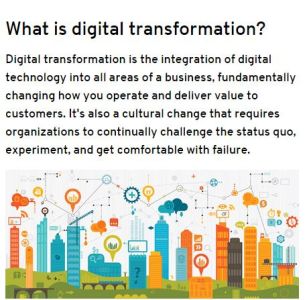Rejoignez getAbstract pour lire le résumé !

Rejoignez getAbstract pour lire le résumé !
Salesforce
Getting Started with Digital Transformation
Salesforce, 2019
Aperçu
Digital transformation changes the way businesses operate, interact with customers and create value.
Recommendation
“Digital transformation“ may be the business world’s biggest buzzword, but not everyone is sure what it actually means. As Salesforce explains in a highly informative online paper, digital transformation doesn’t focus on technology per se but, rather, addresses the way people and business are using innovations to do things differently – whether they are organizing work processes or interacting with customers. The paper provides an excellent overview for everyone who wants to have a concrete understanding of the ubiquitously used phrase.
Summary
About the Author
Salesforce is a company that offers an integrated customer relationship platform.


















Comment on this summary